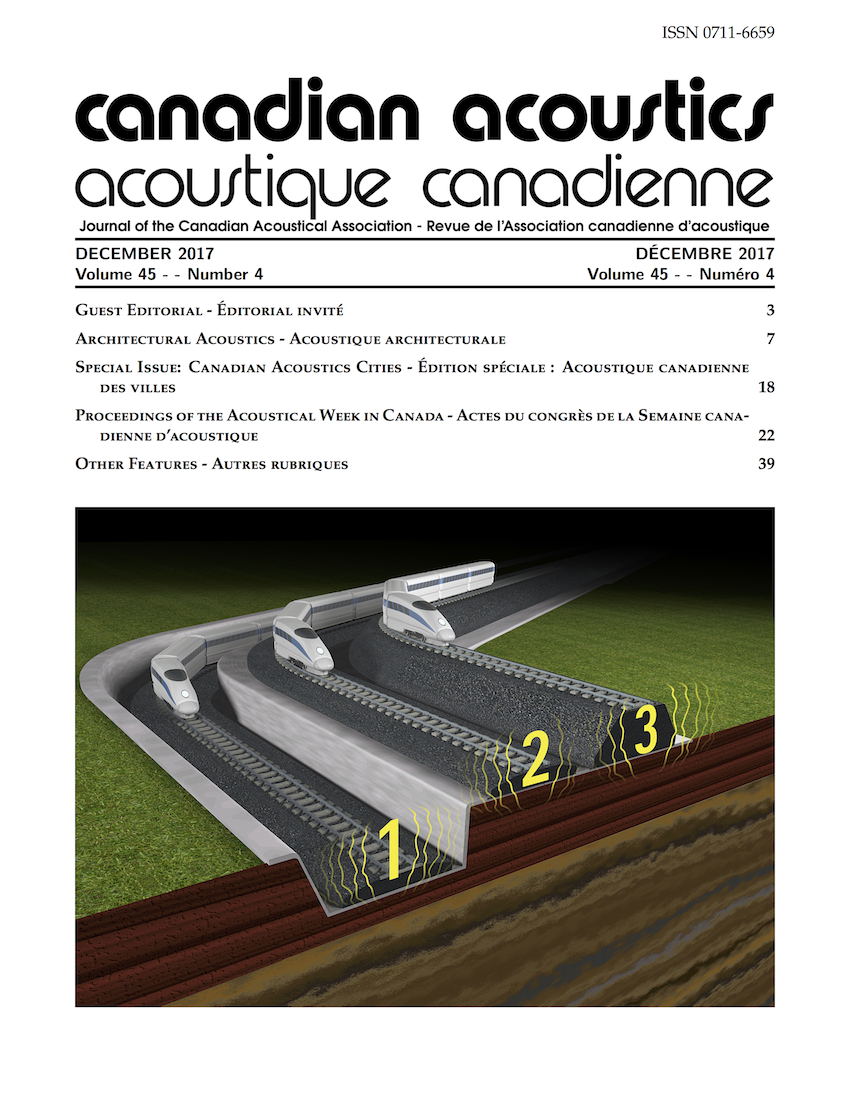Relationship Between Railway Ground-Borne Vibration Propagation And Track Elevation – A Field Study
Résumé
Railway corridors form vital transportation routes for moving goods and people across Canada. These routes have seen explosive growth of close proximity residential developments in Canada’s major cities and the impacts due to rail traffic on residences is a growing concern. A relationship between railway ground-borne vibration propagation and track elevation relative to points of reception was investigated and proposed based a field study of vibration measurements taken adjacent to railway corridors in Ontario and Alberta.The purpose of this study was to compare vibration measurements under three conditions: track elevated on berm, track at grade and track below grade, relative to points of reception. Other railway variables such as track condition, train speed and soil conditions were noted however were not assessed for this paper. Results of this study indicate track elevation is a factor in railway ground-borne vibration propagation. The importance of this relationship on land-use planning adjacent to railway corridors is discussed and existing guidelines for ground-borne vibration and vibration induced noise are summarized.
Fichiers supplémentaires
Publié-e
Comment citer
Numéro
Rubrique
Licence
Author Licensing Addendum
This Licensing Addendum ("Addendum") is entered into between the undersigned Author(s) and Canadian Acoustics journal published by the Canadian Acoustical Association (hereinafter referred to as the "Publisher"). The Author(s) and the Publisher agree as follows:
-
Retained Rights: The Author(s) retain(s) the following rights:
- The right to reproduce, distribute, and publicly display the Work on the Author's personal website or the website of the Author's institution.
- The right to use the Work in the Author's teaching activities and presentations.
- The right to include the Work in a compilation for the Author's personal use, not for sale.
-
Grant of License: The Author(s) grant(s) to the Publisher a worldwide exclusive license to publish, reproduce, distribute, and display the Work in Canadian Acoustics and any other formats and media deemed appropriate by the Publisher.
-
Attribution: The Publisher agrees to include proper attribution to the Author(s) in all publications and reproductions of the Work.
-
No Conflict: This Addendum is intended to be in harmony with, and not in conflict with, the terms and conditions of the original agreement entered into between the Author(s) and the Publisher.
-
Copyright Clause: Copyright on articles is held by the Author(s). The corresponding Author has the right to grant on behalf of all Authors and does grant on behalf of all Authors, a worldwide exclusive license to the Publisher and its licensees in perpetuity, in all forms, formats, and media (whether known now or created in the future), including but not limited to the rights to publish, reproduce, distribute, display, store, translate, create adaptations, reprints, include within collections, and create summaries, extracts, and/or abstracts of the Contribution.


